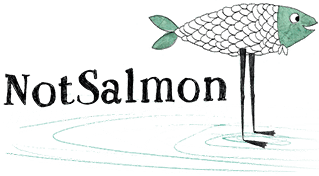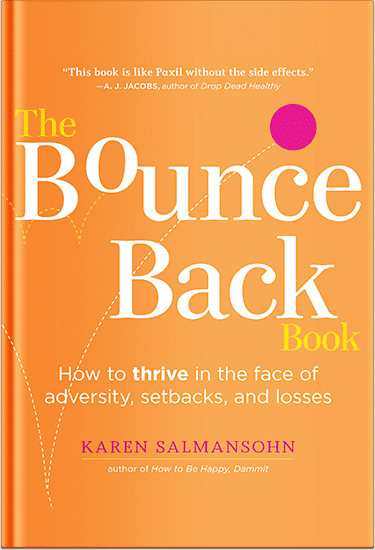 Ultraviolet-Visible Spectroscopy (UV-Vis) is a widely used analytical technique that measures the absorbance of ultraviolet and visible light by a substance. By examining how a sample interacts with light in these wavelengths, UV-Vis spectroscopy show valuable insights into the chemical composition, concentration, and properties of a substance.
Ultraviolet-Visible Spectroscopy (UV-Vis) is a widely used analytical technique that measures the absorbance of ultraviolet and visible light by a substance. By examining how a sample interacts with light in these wavelengths, UV-Vis spectroscopy show valuable insights into the chemical composition, concentration, and properties of a substance.
This technique is used across various scientific fields. For example: chemistry, biology, and environmental science.
Here’s a detailed explanation of the many applications of UV-Vis spectroscopy.
Fundamental Principles of UV-Vis Spectroscopy
Agilent UV VIS spectroscopy operates on the principle that different substances absorb light at specific wavelengths. When a sample is exposed to ultraviolet (200-400 nm) and visible (400-700 nm) light, certain wavelengths are absorbed by the sample. Meanwhile others are transmitted or reflected.
By measuring the intensity of light before and after passing through the sample, scientists can determine the absorbance spectrum. This is characteristic of the sample’s molecular structure and concentration.
Applications in Chemistry
Determining Concentration
One of the primary uses of UV-Vis spectroscopy in chemistry is determining the concentration of a solute in a solution. By using Beer-Lambert’s law, which relates absorbance to concentration, chemists can calculate the concentration of a substance. They base it on its absorbance at a specific wavelength.
This application is crucial in various chemical analyses. This includes quality control, product formulation, and environmental monitoring.
Identifying Chemical Compounds
UV-Vis spectroscopy is a method used to identify chemical substances by creating a unique absorbance spectrum for each one. This spectrum serves as a molecular fingerprint. This enables chemists to compare the observed spectrum with known ones and identify different compounds.
This technique is especially helpful for studying organic substances. They often have unique absorption characteristics due to their structure and functional groups.
Studying Reaction Kinetics
UV-Vis spectroscopy is also used to track chemical reactions as they happen. By observing changes in the absorbance over time, scientists can monitor the rate of reactions, detect intermediate products, and learn about how reactions work. This is crucial for both scientific research and industrial applications where managing and optimizing reactions is necessary.
Applications in Biology
Analyzing Nucleic Acids and Proteins
In the field of biology, UV-Vis spectroscopy plays a key role in analyzing nucleic acids (like DNA and RNA) and proteins. DNA and RNA absorb UV light around 260 nm, while proteins absorb around 280 nm because of specific amino acids they contain.
By measuring these absorbance levels, researchers can assess the amount and quality of nucleic acids and proteins, which is vital for practices like sequencing and structural analysis.
Monitoring Enzyme Activities
This technique helps track enzyme activities by recording changes in absorbance caused by enzymes during reactions. For instance, many enzyme tests use substrates that change color when reacted, which helps in measuring enzyme efficiency and understanding their behavior. This is important for fields like biochemistry, pharmaceutical development, and medical diagnostics.
Studying Ligand-Receptor Interactions
UV-Vis spectroscopy is useful for examining how ligands (molecules that bind to specific targets) interact with receptors or proteins. Observing changes in the absorbance spectrum when ligands bind can reveal details about the binding strength, reaction rates, and structural alterations during these interactions. These insights are essential for drug development and studying biological mechanisms.
Applications in Environmental Science
Monitoring Water Quality
In environmental science, UV-Vis spectroscopy is used to monitor water quality by analyzing the presence of contaminants and pollutants.
For example, it can detect organic compounds, heavy metals, and other substances based on their absorbance characteristics. This application is valuable for assessing the safety and quality of drinking water, wastewater treatment, and environmental pollution.
Studying Atmospheric Components
The technique is also used to study atmospheric components such as ozone, nitrogen dioxide, and other gases that absorb UV or visible light. By measuring absorbance at specific wavelengths, researchers can quantify the concentration of these components and assess their impact on air quality and climate change.
Analyzing Soil Samples
UV-Vis spectroscopy is employed to analyze soil samples for the presence of organic and inorganic substances. It can provide information on soil composition, contamination levels, and nutrient content. This application aids in environmental monitoring, agriculture, and land management.
Applications in Pharmaceuticals
Drug Analysis and Development
In the pharmaceutical industry, UV-Vis spectroscopy is a key tool for analyzing and developing medications. It helps measure the amount of active ingredients in drugs, check drug stability, and ensure that formulations are consistent. This technique is critical for maintaining quality control, meeting regulatory standards, and creating new medications.
Examining Drug Interactions
UV-Vis spectroscopy is also used to explore how drugs interact with other substances, such as inactive ingredients or metabolic byproducts. By observing changes in light absorption, scientists can study possible drug interactions, which is vital for confirming the safety and effectiveness of medications.
The Essential Role of UV-Vis Spectroscopy in Advancing Scientific Knowledge
UV-Vis spectroscopy is a versatile and powerful tool that’s used in many scientific areas. It’s employed for tasks like measuring concentrations, identifying chemical compounds, tracking biological activities, and examining environmental samples. This technique offers critical insights into the composition, characteristics, and behaviors of different substances.
With its capacity to provide accurate and dependable data, UV-Vis spectroscopy is an essential instrument in fields like chemistry, biology, environmental science, and pharmaceuticals. As technological advancements continue, the applications for UV-Vis spectroscopy are expected to grow, further enhancing its contributions to scientific research and practical applications in various industries.
Live longer, younger, healthier
Check out my bestselling longevity book Life Is Long
P.S. Before you zip off to your next Internet pit stop, check out these 2 game changers below - that could dramatically upscale your life.
1. Check Out My Book On Enjoying A Well-Lived Life: It’s called "Your To Die For Life: How to Maximize Joy and Minimize Regret Before Your Time Runs Out." Think of it as your life’s manual to cranking up the volume on joy, meaning, and connection. Learn more here.
2. Life Review Therapy - What if you could get a clear picture of where you are versus where you want to be, and find out exactly why you’re not there yet? That’s what Life Review Therapy is all about.. If you’re serious about transforming your life, let’s talk. Learn more HERE.
Think happier. Think calmer.
Think about subscribing for free weekly tools here.
No SPAM, ever! Read the Privacy Policy for more information.
One last step!
Please go to your inbox and click the confirmation link we just emailed you so you can start to get your free weekly NotSalmon Happiness Tools! Plus, you’ll immediately receive a chunklette of Karen’s bestselling Bounce Back Book!


 Ultraviolet-Visible Spectroscopy (UV-Vis) is a widely used analytical technique that measures the absorbance of ultraviolet and visible light by a substance. By examining how a sample interacts with light in these wavelengths, UV-Vis spectroscopy show valuable insights into the chemical composition, concentration, and properties of a substance.
Ultraviolet-Visible Spectroscopy (UV-Vis) is a widely used analytical technique that measures the absorbance of ultraviolet and visible light by a substance. By examining how a sample interacts with light in these wavelengths, UV-Vis spectroscopy show valuable insights into the chemical composition, concentration, and properties of a substance. 